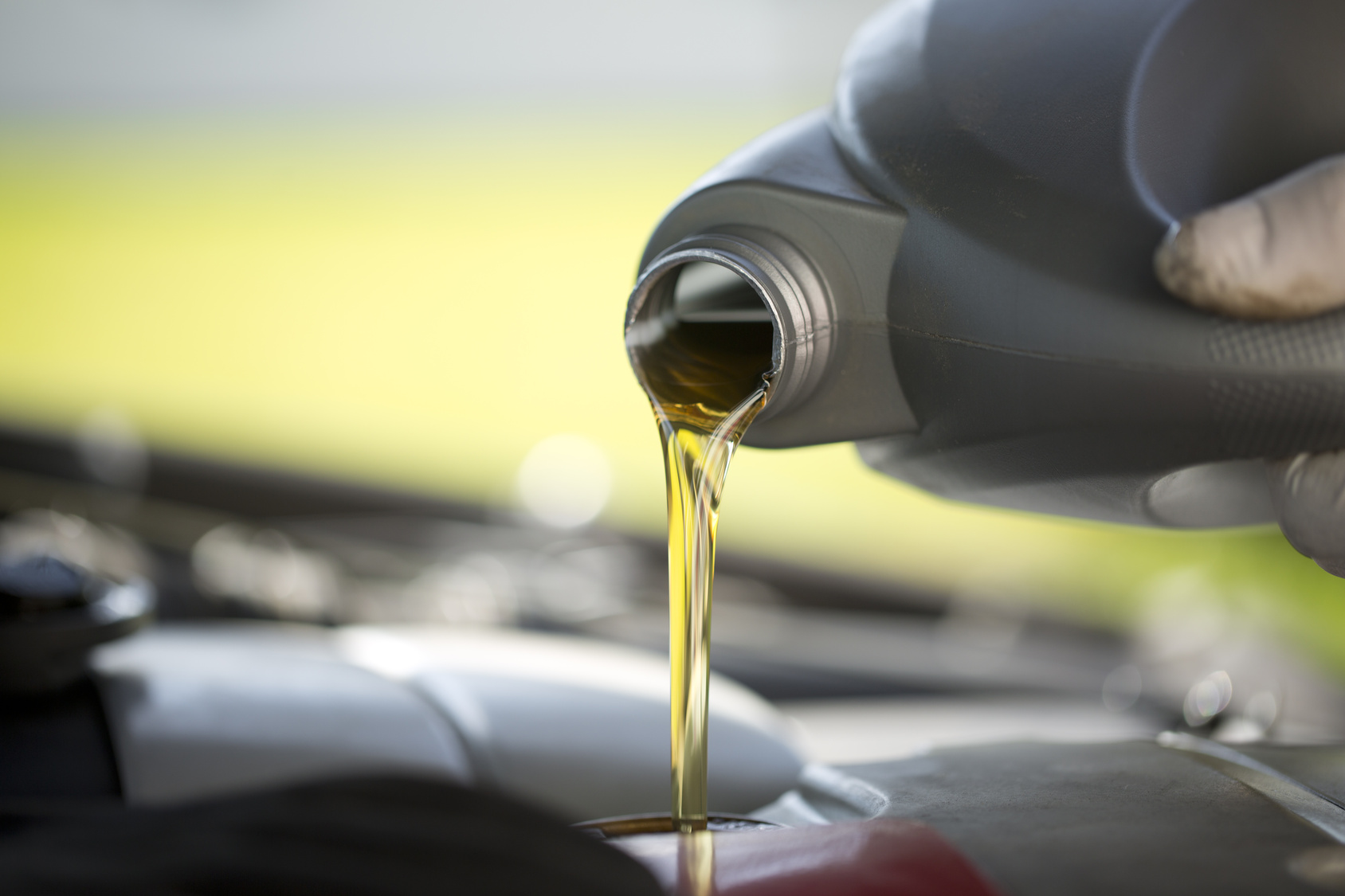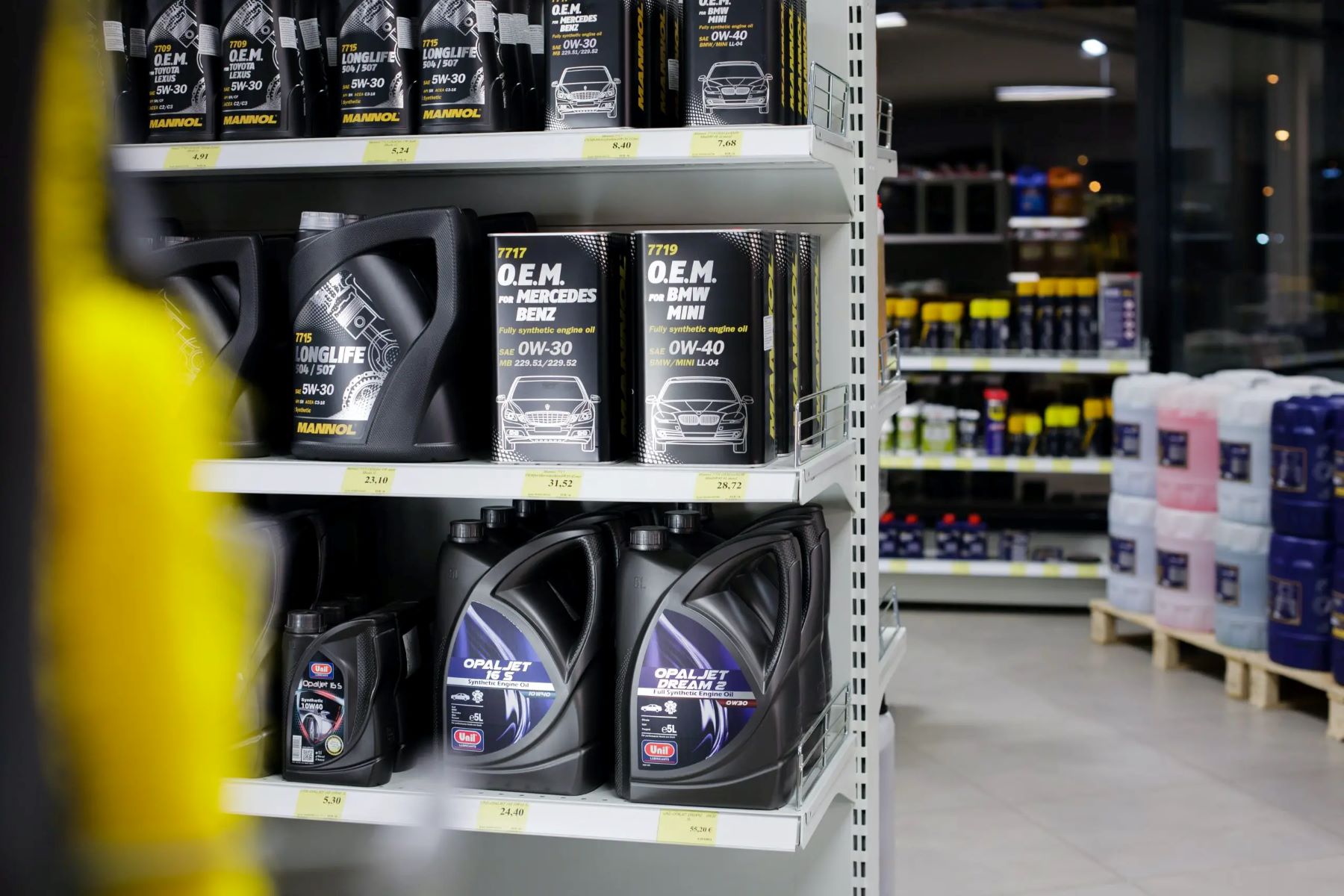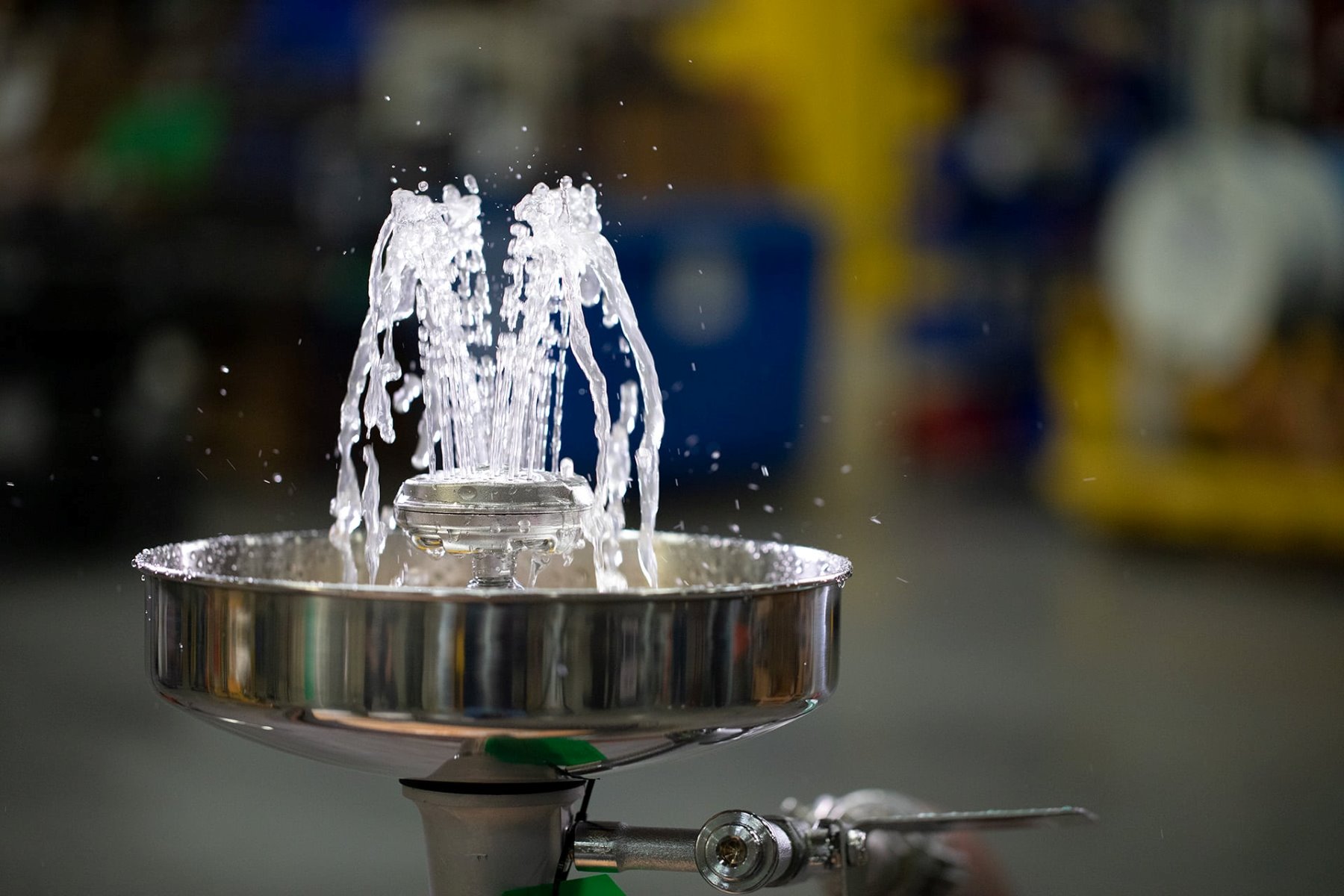Home>Automotive>SAE 30 Vs SAE 5w30: What You Need To Know!


Automotive
SAE 30 Vs SAE 5w30: What You Need To Know!
Published: January 10, 2024
Discover the differences between SAE 30 and SAE 5w30 motor oils in the automotive industry. Learn what you need to know to make the right choice for your vehicle.
(Many of the links in this article redirect to a specific reviewed product. Your purchase of these products through affiliate links helps to generate commission for Regretless.com, at no extra cost. Learn more)
Table of Contents
Introduction
When it comes to choosing the right motor oil for your car, the options can be overwhelming. Among the various types of motor oil, SAE 30 and SAE 5w30 are two popular choices that are often compared. Understanding the differences between these two types of motor oil is crucial for maintaining the optimal performance and longevity of your vehicle's engine.
In this comprehensive guide, we will delve into the key characteristics of SAE 30 and SAE 5w30 motor oils, shedding light on their viscosity, engine protection capabilities, fuel efficiency, and environmental impact. By the end of this article, you will have a clear understanding of the distinct features of SAE 30 and SAE 5w30 motor oils, empowering you to make an informed decision when it comes to selecting the most suitable option for your vehicle.
Let's embark on this journey to unravel the mysteries of SAE 30 and SAE 5w30 motor oils, equipping you with the knowledge you need to keep your engine running smoothly and efficiently.
What Do SAE 30 and SAE 5w30 Mean?
SAE 30 and SAE 5w30 are both types of motor oil that are classified based on their viscosity and performance in different temperature conditions. The "SAE" stands for the Society of Automotive Engineers, which sets the standards for motor oil viscosity ratings.
The "30" in SAE 30 refers to the viscosity rating of the oil. Viscosity is a measure of the oil's resistance to flow and shear under various conditions. SAE 30 oil has a single viscosity grade, meaning it performs within a certain viscosity range at a specified temperature. This type of oil is commonly recommended for use in warmer climates and older engines that have looser tolerances.
On the other hand, SAE 5w30 represents a multi-grade oil. The "5w" indicates the oil's viscosity in cold temperatures, with the "w" standing for "winter." This means that the oil has a lower viscosity when the engine is cold, allowing for easier starting and better protection during cold starts. The "30" denotes the oil's viscosity at operating temperatures, similar to SAE 30 oil. SAE 5w30 is designed to provide improved cold-temperature flow while maintaining the necessary viscosity for engine protection at higher temperatures.
In essence, the difference between SAE 30 and SAE 5w30 lies in their viscosity characteristics across different temperature ranges. SAE 30 is a single-grade oil suitable for warmer climates and older engines, while SAE 5w30 is a multi-grade oil engineered to offer enhanced cold-weather performance without compromising viscosity at operating temperatures.
Understanding the significance of these viscosity ratings is essential for selecting the right motor oil that aligns with your vehicle's requirements and the prevailing climate conditions. Whether you live in a region with extreme temperature variations or own an older vehicle, the choice between SAE 30 and SAE 5w30 can significantly impact your engine's performance and longevity.
Viscosity and Temperature
The viscosity of motor oil plays a pivotal role in maintaining engine performance across a spectrum of operating temperatures. Understanding how viscosity and temperature interplay is crucial for selecting the most suitable motor oil for your vehicle.
Viscosity refers to the oil's resistance to flow and shear under varying temperature conditions. In the realm of motor oils, the Society of Automotive Engineers (SAE) has established a standardized viscosity rating system to classify oils based on their flow characteristics at different temperatures.
SAE 30 oil, with a single viscosity grade, is tailored for use in warmer climates and is well-suited for older engines with looser tolerances. Its viscosity remains relatively stable across a broad temperature range, making it an ideal choice for regions with consistently high temperatures.
In contrast, SAE 5w30, a multi-grade oil, offers a unique viscosity profile that caters to both cold-weather start-up and high-temperature operating conditions. The "5w" designation signifies its low-temperature viscosity, ensuring easy engine start-up and efficient lubrication during cold weather. This characteristic is particularly advantageous in regions with harsh winters, where cold starts can pose challenges to engine performance. The "30" rating denotes its viscosity at typical operating temperatures, providing the necessary protection and lubrication for the engine components.
The significance of these viscosity ratings becomes apparent when considering the impact of temperature on motor oil performance. In colder temperatures, the viscosity of oil becomes critical, as it needs to flow easily to reach engine components promptly. SAE 5w30's lower viscosity at cold temperatures enables it to flow more readily, ensuring rapid lubrication during start-up, thereby reducing wear and tear on engine components.
Conversely, at higher temperatures, the oil's viscosity must remain within the optimal range to maintain a consistent lubricating film on engine parts. SAE 30 and SAE 5w30 are formulated to deliver the required viscosity at operating temperatures, safeguarding the engine against friction and wear, thereby prolonging its lifespan.
In summary, the distinction between SAE 30 and SAE 5w30 lies in their viscosity characteristics across different temperature ranges. While SAE 30 is tailored for warmer climates and older engines, SAE 5w30's multi-grade formulation ensures superior performance in diverse temperature conditions, making it a versatile choice for modern vehicles operating in varying climates.
Understanding the intricate relationship between viscosity and temperature empowers vehicle owners to make informed decisions regarding motor oil selection, enabling them to optimize engine performance and longevity across a range of environmental conditions.
Engine Protection
Engine protection is a critical aspect of motor oil performance, directly impacting the longevity and reliability of a vehicle's engine. The choice between SAE 30 and SAE 5w30 motor oils significantly influences the level of protection afforded to the engine components under varying operating conditions.
SAE 30 motor oil, with its single viscosity grade, provides robust protection for engines operating in warmer climates. Its viscosity remains consistent across a wide temperature range, ensuring a stable lubricating film on engine parts even in high-temperature environments. This stability is particularly beneficial for older engines with looser tolerances, as it helps maintain optimal oil pressure and prevents metal-to-metal contact, thereby reducing wear on critical components such as bearings, camshafts, and crankshafts.
On the other hand, SAE 5w30 motor oil offers enhanced engine protection through its multi-grade formulation. The lower viscosity of SAE 5w30 at cold temperatures facilitates rapid oil circulation during start-up, effectively lubricating critical engine components from the moment the engine ignites. This immediate lubrication is vital for minimizing wear during cold starts, a period when engine components are most vulnerable to damage due to inadequate lubrication.
At operating temperatures, both SAE 30 and SAE 5w30 oils maintain the necessary viscosity to uphold a consistent lubricating film on engine parts, thereby mitigating friction and reducing wear. This sustained protection is crucial for safeguarding the engine against the rigors of daily operation, ensuring optimal performance and longevity.
Furthermore, the additive packages incorporated into modern SAE 5w30 oils contribute to enhanced engine protection by providing additional benefits such as improved cleaning properties, corrosion resistance, and extended oil change intervals. These additives work in tandem to safeguard the engine against harmful deposits, oxidation, and wear, thereby preserving its overall health and performance.
In essence, both SAE 30 and SAE 5w30 motor oils are engineered to deliver robust engine protection, albeit tailored to different operating conditions. SAE 30 excels in warmer climates and older engines, while SAE 5w30 offers versatile protection across a broader temperature spectrum, making it well-suited for modern vehicles operating in diverse environmental conditions.
Understanding the nuances of engine protection provided by SAE 30 and SAE 5w30 oils empowers vehicle owners to make informed choices that align with their specific driving conditions and engine requirements, ensuring the sustained health and performance of their vehicles' engines.
Fuel Efficiency
Fuel efficiency is a crucial consideration for vehicle owners, directly impacting operating costs, environmental sustainability, and overall driving experience. When evaluating the fuel efficiency implications of motor oils, the choice between SAE 30 and SAE 5w30 can yield significant differences in a vehicle's overall fuel consumption and performance.
SAE 30 motor oil, with its single viscosity grade tailored for warmer climates, exhibits a consistent viscosity profile that ensures optimal lubrication and protection in high-temperature environments. This stability contributes to efficient engine operation, promoting smooth performance and reliable fuel consumption. In regions characterized by consistently warm weather, SAE 30 oil can help maintain steady fuel efficiency by providing the necessary lubrication to engine components, thereby minimizing friction and optimizing overall engine performance.
On the other hand, SAE 5w30 motor oil, with its multi-grade formulation designed to address both cold-weather start-up and high-temperature operating conditions, offers a unique advantage in terms of fuel efficiency. The lower viscosity of SAE 5w30 at cold temperatures facilitates easier engine start-up, reducing the energy required for initial oil circulation and enhancing fuel economy during cold starts. This feature is particularly beneficial in regions with harsh winters, where cold starts can significantly impact fuel efficiency.
Furthermore, the enhanced cold-weather performance of SAE 5w30 contributes to improved fuel efficiency during the critical start-up phase, enabling the engine to operate more efficiently from the moment it ignites. This efficiency is further complemented by the oil's ability to maintain the necessary viscosity at operating temperatures, ensuring consistent lubrication and reduced friction, which are essential factors in optimizing fuel economy.
In summary, the choice between SAE 30 and SAE 5w30 motor oils can have tangible implications for a vehicle's fuel efficiency, contingent on the prevailing climate conditions and driving patterns. While SAE 30 oil offers steady fuel efficiency in warmer climates, SAE 5w30's multi-grade formulation provides advantages in cold-weather start-up and overall operating efficiency, making it a compelling choice for vehicles operating in diverse environmental conditions.
Understanding the impact of motor oil selection on fuel efficiency empowers vehicle owners to make informed decisions that align with their driving environments and priorities, ultimately contributing to more sustainable and cost-effective vehicle operation.
Environmental Impact
The environmental impact of motor oil usage extends beyond its immediate function in lubricating and protecting vehicle engines. The choice between SAE 30 and SAE 5w30 motor oils can have notable implications for environmental sustainability, encompassing factors such as resource conservation, emissions, and overall ecological footprint.
SAE 30 motor oil, with its suitability for warmer climates and older engines, presents specific considerations in terms of environmental impact. In regions characterized by consistently high temperatures, the stable viscosity profile of SAE 30 oil contributes to efficient engine operation, thereby potentially reducing overall emissions and environmental strain. Additionally, the longevity and reliability afforded to older engines by SAE 30 oil can indirectly contribute to resource conservation, as it minimizes the need for premature engine replacements or extensive maintenance, ultimately reducing the environmental footprint associated with manufacturing and disposal of engine components.
Conversely, SAE 5w30 motor oil's multi-grade formulation, designed to address cold-weather start-up and high-temperature operating conditions, offers distinct environmental advantages. The enhanced cold-weather performance of SAE 5w30 contributes to reduced emissions during critical start-up phases, as the oil's lower viscosity facilitates easier engine start-up, potentially minimizing the environmental impact of cold-start emissions. Furthermore, the overall engine protection and efficiency provided by SAE 5w30 can contribute to prolonged engine life and reduced resource consumption, aligning with broader sustainability goals.
Moreover, the advancements in additive packages incorporated into modern SAE 5w30 oils further enhance their environmental impact. These additives, including detergents, dispersants, and anti-wear agents, contribute to cleaner engine operation, reduced emissions, and extended oil change intervals. By maintaining engine cleanliness and minimizing harmful deposits, these additives play a role in promoting sustainable vehicle operation and reducing the environmental burden associated with engine maintenance and disposal.
In summary, the choice between SAE 30 and SAE 5w30 motor oils can influence environmental impact through their respective contributions to emissions, resource conservation, and overall ecological footprint. While SAE 30 oil offers benefits in regions with consistently warm climates and older engines, SAE 5w30's multi-grade formulation and advanced additives present compelling advantages for environmental sustainability, particularly in diverse temperature conditions and modern engine applications.
Understanding the environmental implications of motor oil selection empowers vehicle owners to make informed choices that align with their environmental values and contribute to sustainable vehicle operation and maintenance.
Conclusion
In conclusion, the choice between SAE 30 and SAE 5w30 motor oils hinges on a multitude of factors, including viscosity characteristics, engine protection, fuel efficiency, and environmental impact. Understanding the distinct attributes of these motor oils is pivotal for making informed decisions that align with specific driving conditions, climate variations, and vehicle requirements.
SAE 30 motor oil, with its single viscosity grade, excels in warmer climates and is well-suited for older engines with looser tolerances. Its stable viscosity profile ensures reliable engine protection and efficient lubrication, making it a valuable choice for regions characterized by consistently high temperatures and vintage vehicle applications.
On the other hand, SAE 5w30 motor oil, featuring a multi-grade formulation, offers versatility in addressing cold-weather start-up and high-temperature operating conditions. Its lower viscosity at cold temperatures facilitates easier engine start-up, leading to improved fuel efficiency and reduced emissions during critical start-up phases. Additionally, the advanced additives in modern SAE 5w30 oils contribute to enhanced engine protection, cleanliness, and overall environmental sustainability.
Ultimately, the selection of SAE 30 or SAE 5w30 motor oil should be guided by the specific climate conditions, driving patterns, and environmental considerations relevant to each vehicle. While SAE 30 oil provides steady engine protection and fuel efficiency in warmer climates and older engines, SAE 5w30's multi-grade formulation and environmental advantages make it a compelling choice for modern vehicles operating in diverse environmental conditions.
By comprehensively understanding the implications of motor oil selection on engine performance, fuel efficiency, and environmental impact, vehicle owners can make informed choices that optimize the longevity, reliability, and sustainability of their vehicles. Whether navigating scorching summer temperatures or braving frigid winter conditions, the right motor oil selection can make a significant difference in ensuring a smooth and efficient driving experience while minimizing environmental impact.
In essence, the decision between SAE 30 and SAE 5w30 motor oils is not merely a choice between two products; it is a strategic decision that directly influences engine performance, fuel economy, and environmental sustainability. Armed with this knowledge, vehicle owners can confidently select the most suitable motor oil that aligns with their unique driving circumstances and environmental values, ultimately contributing to the long-term health and efficiency of their vehicles.














